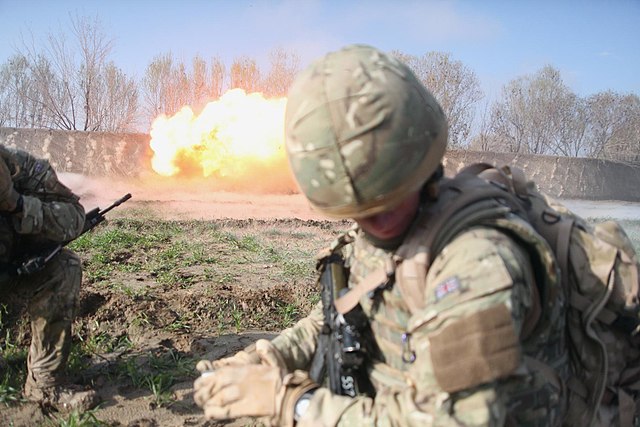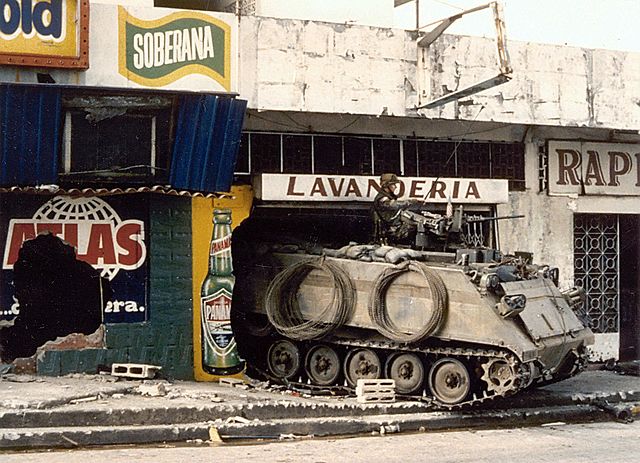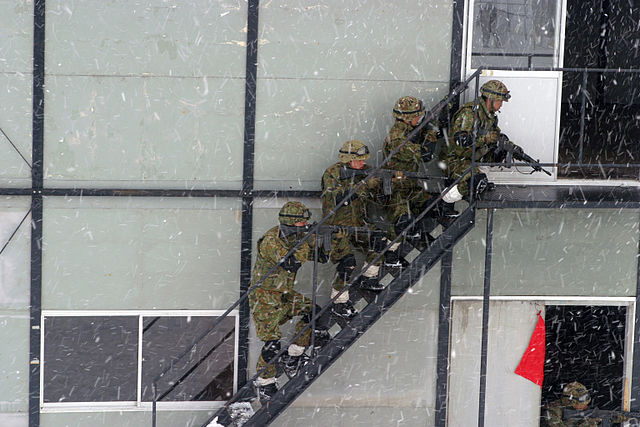Mouse-holing is a tactic used in urban warfare in which soldiers create access to adjoining rooms or buildings by blasting or tunneling through a wall. The tactic is used to avoid open streets since advancing infantry, caught in enfilade, are easily targeted by machine-gun and sniper fire. Another purpose is to reach enemy troops hidden within a structure.
US marines in Afghanistan, 2011.
A British engineer detonates an explosive charge to create a mouse-hole in a compound wall in Afghanistan.
Urban warfare is warfare in urban areas such as towns and cities. Urban combat differs from combat in the open at both operational and the tactical levels. Complicating factors in urban warfare include the presence of civilians and the complexity of the urban terrain. Urban combat operations may be conducted to capitalize on strategic or tactical advantages associated with the possession or the control of a particular urban area or to deny these advantages to the enemy. It is considered to be arguably the most difficult form of warfare.
A United States Army M113 armored personnel carrier during the 1989 United States invasion of Panama
JGSDF soldiers practice MOUT tactics in the Ojojibara Maneuver Area of Sendai, Japan during an exercise in 2004
The Battle of Tampere during the 1918 Finnish Civil War was the largest urban warfare in the Nordic war at the time, measured by the number of troops involved. The picture shows the ruins of the city of Tampere after the battle.
Japanese troops in the ruins of Shanghai during the Second Sino-Japanese War






